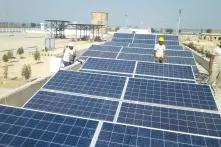Geogenic hydrogen—often called "white" or "natural" hydrogen—is gaining attention in recent reports as an alternative energy source in the transition away from fossil fuels. Formed deep within the Earth by geological processes, it promises to be a cheaper and less energy-intensive alternative to "green" hydrogen, which is produced from renewable electricity. However, this untapped resource comes with a large to-do list of research, policy development, social and environmental safeguards.

Hydrogen's Role in Addressing the Climate Crisis
The rapid phase-out of fossil fuels remains a top priority in combating the climate crisis. For certain hard-to-electrify industries like steelmaking, hydrogen and its derivatives will likely play a key role. Until now, the spotlight of the energy transition in these sectors has primarily been on “green” hydrogen—produced via energy-intensive electrolysis powered by renewable electricity. However, this method remains an expensive and scarce solution for the short to medium term.
This is where geogenic hydrogen is proposed as a potential alternative—offering natural origins and lower production demands—but its journey from concept to reality is far from straightforward.
What Makes Geogenic Hydrogen Special?
Unlike its cousin “green” hydrogen, geogenic hydrogen is created naturally through processes like serpentinization (where minerals react with water) and radiolysis (when radiation splits water molecules). It has been observed in localized natural phenomena like Turkey’s "eternal flames" for a long time, and is now being explored for industrial use. However, research into geogenic hydrogen is still quite limited, and large-scale production is unlikely before 2040, making it an unlikely candidate for meeting near-term decarbonization targets. Its future potential keeps it in the conversation.
A Global "Gold Rush" for Geogenic Hydrogen
Interest in geogenic hydrogen is sparking a worldwide exploration boom. Prominent regions for exploration include Mali, Albania, France, and Australia. In response, countries like France and Spain have adjusted their policies to facilitate hydrogen extraction, while exploration efforts are expanding worldwide. Some governments, including those in France and Spain, are adapting policies to encourage extraction. Germany, however, is taking a more cautious approach, citing legal uncertainties and environmental risks.
Dual Opportunity: Hydrogen and Geothermal Energy
In geothermal hotspots such as Iceland or parts of East Africa, naturally occurring hydrogen within geothermal reservoirs could be extracted alongside geothermal energy. Currently, this hydrogen is released into the atmosphere, future co-generation efforts could integrate its capture. If done sustainably, this dual approach could reduce costs and support decarbonization goals.
Unveiling the Risks: Socio-Ecological Challenges of Geogenic Hydrogen
Despite its potential, the extraction and handling of geogenic hydrogen raise significant environmental and social risks. Hydrogen's tiny molecules can easily escape, contributing to greenhouse gas emissions. Associated gases like methane and hydrogen sulfide pose additional threats to ecosystems. While lifecycle assessments suggest that geogenic hydrogen could have a lower carbon footprint than other forms, this depends on effective management of leaks and waste gases.
Drilling for geogenic hydrogen shares environmental risks with natural gas extraction and fracking, such as land disruption and high water usage. Geogenic hydrogen production can cause substantial land disturbance from exploration, drilling, and infrastructure development. The process also demands significant water resources, raising concerns about water contamination and exacerbating water scarcity in already water-stressed communities.
Given these concerns, it is clear that strict environmental regulations and robust mitigation strategies are critical.
A Resource with Major Unknowns
Geogenic hydrogen shows promise as a supplementary energy source for the transition to clean energy, but significant uncertainties remain. Key challenges include scaling production, managing socio-environmental impacts on groundwater and ecosystems, ensuring long-term sustainability, and advancing extraction technology. Unlocking its potential will require substantial research and robust policy frameworks to address technical, social, environmental, and economic hurdles.



